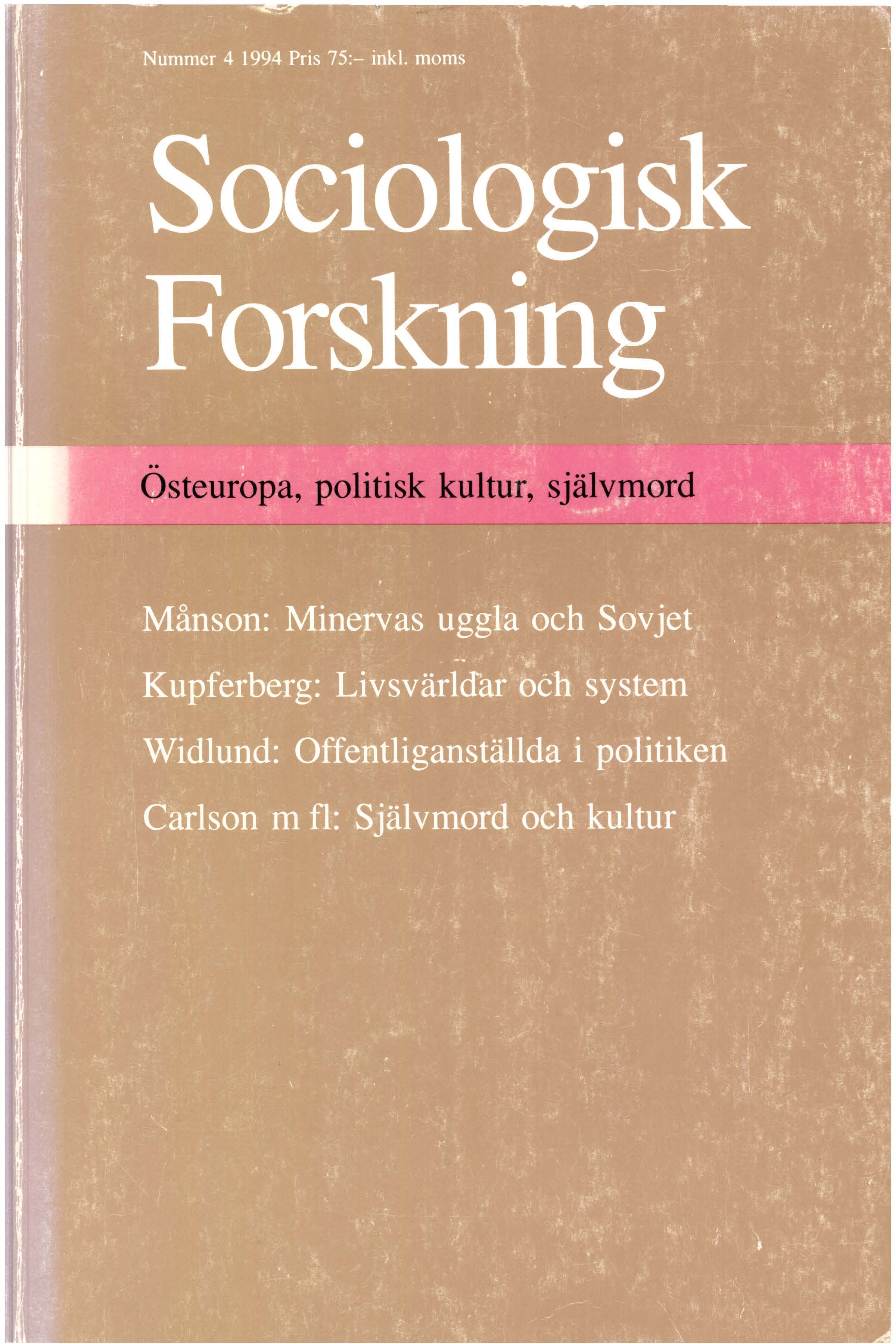Självmord, mord och kultur. En jämförelse av tio länder i Europa
DOI:
https://doi.org/10.37062/sf.31.18624Abstract
Suicide, homicide and culture. A comparison of ten european countries
The present study investigates the way in which the homicide and suicide rates of ten European countries are related to each other. Is there empirical support for a psychoanalytically based hypothesis of a reverse relationship between homicide and suicide? Or are certain cultural values and patterns more important for such links? Rank correlations and regressions of age-standardised suicide and homicide rates, for men and women in the European countries were conducted. Similar analyses in relation to values as defined by World Values Survey were also performed. There was a slight tendency for countries with high homicide rates to have low suicide rates, and vice versa (among men). For women, however, the relationship was found to be positive and stronger throughout. Countries with high female homicide rates often also had high female suicide rates. The cultural values which could be associated most closely with suicide and homicide rates were religiously and sexually coloured moral attitudes. Suicide rates were lower in countries where God plays a greater role in peoples’ consciousness. Countries where attitudes to abortion, euthanasia, divorce etc were negative, usually also had lower suicide rates for both sexes. The relationship between homicide rates and these attitudes was, for men, the opposite. In countries with a strong belief in God and low religious and sexual tolerance the male but not the female risk of being murdered is higher than in countries with a weaker belief in God. The hypothetical relation between homicide and suicide rates, suggested by psychoanalytically inspired theories, seems to be more readily explained by cultural patterns, in particular a complex of attitudes towards religious and sexual matters.
Downloads
Publicerad
Referera så här
Nummer
Sektion
Licens
Allt material i Sociologisk Forskning publiceras med omedelbar öppen tillgång (open access), under Creative Commons-licensen CC BY-NC-ND 4.0.
Allt innehåll i tidskriften är fritt tillgängligt utan kostnad och får för icke-kommersiella syften fritt läsas, laddas ned, kopieras, delas, skrivas ut och länkas. Innehållet får dock inte ändras. När innehållet används måste författare och källa anges. Upphovsrätten till innehållet tillhör respektive författare. Inga publiceringsavgifter tas ut.





